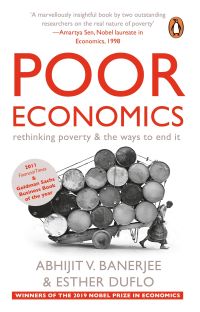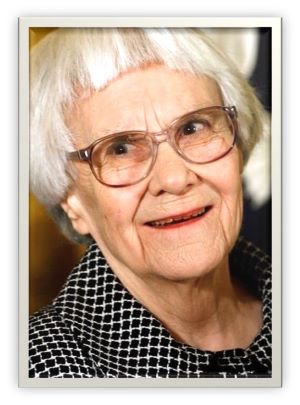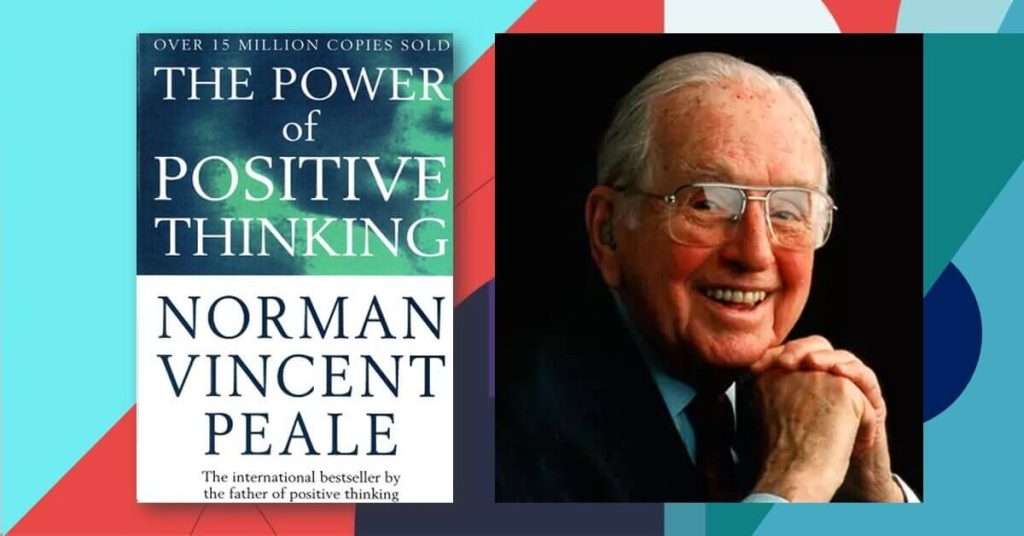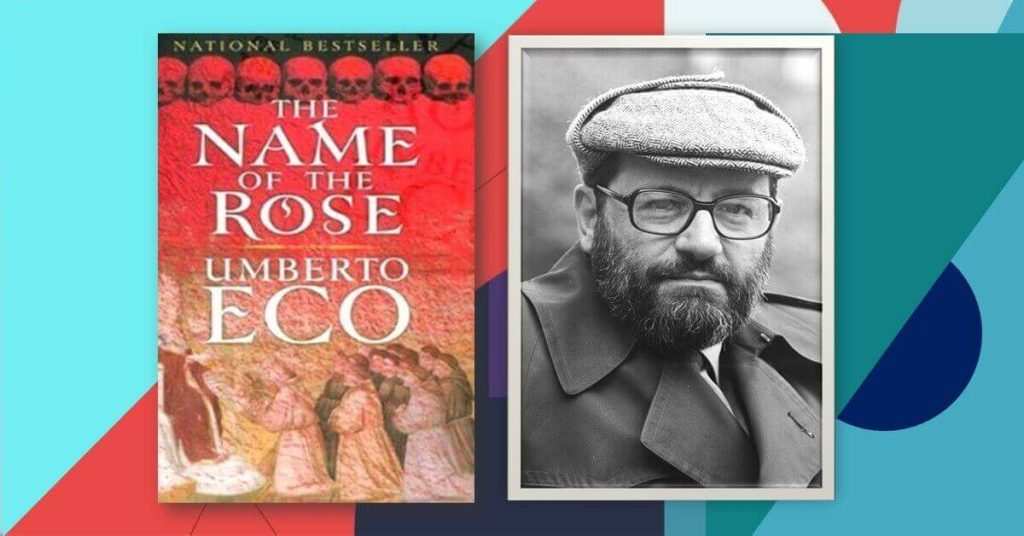Last updated on June 15th, 2024 at 05:08 pm
To Kill a Mockingbird is a novel written by American novelist Lee Harper.
It’s one of the best must-read novels based mostly on racial discrimination between coloured and white people. It shows how racial prejudices of white people accorded them with supremacy over the Negroes. Just because of colour privilege and majority approval, the Jury of Maycomb country indicted an innocent man for a first-degree crime.
To Kill a Mockingbird revolves around the Maycomb County of America. Looks like an autobiographical, it is a thorough narration of the daily happenings of the County by two siblings: a brother and sister, Jem and his sister, Scout Finch. Scout is the one who describes the whole novel, from their neighbours’ daily chores, their friend Dill, their father’s profession, the Sheriff of the county, the oppressive neighbour Radley family and the deplorable condition of the black people.
To Kill a Mockingbird Overview
To Kill a Mockingbird is both a powerful indictment of racial injustice and a tender coming-of-age story.
Narrated in the first person through the adult voice of Scout, who is almost six years old when the novel begins, the story weaves together two interrelated plots about life in Maycomb County, Alabama, in the 1930s.
One storyline involves the trial of Tom Robinson, a black man accused of raping Mayella Ewell, a white woman; the other follows the adventures of Scout, her elder brother Jem, and their friend Dill, as they try to investigate the mysterious legend of the eerie Radley Place, which houses a ‘malevolent phantom’ nicknamed Boo Radley. Lee contrasts the innocence and curiosity of the children with the ignorance and hostility of many of the adults, using the character of Atticus Finch—the children’s father and a respected lawyer who defends Tom Robinson—as a standard of reason, compassion, and fairness.
Atticus helps the children leave behind their world of make-believe and come closer to understanding the mystery behind the Radley Place, just as he pushes the town of Maycomb County towards its own confrontation with bigotry and injustice.
Combining dry humour with evocative descriptions of the various social groups, economic problems, and political issues of the time, Lee creates in To Kill a Mockingbird a poignant tale of small-town southern life in the United States.
To Kill a Mockingbird Setting
To Kill a Mockingbird focuses on Maycomb, Alabama in the 1930s. As a town, Macomb was so small and limited that Scout’s father is ‘related by blood or marriage to nearly every family in the town’. As a narrator, Scout devotes the very beginning of her narrative to a description of her Southern customs.
She reveals that her English ancestor, Simon Finch, a slave-holding, enterprising skinflint, had founded Finch’s Landing, a cotton plantation where generations of Finches, including Atticus, have grown up.
Maycomb, twenty miles west of Finch’s Landing, is home to old southern families whose heritages, traditions, and prejudices are deeply rooted where each family name bears its own accepted identity in town. The Haverfords, for example, have ‘a name synonymous with jackass’ and the Cunninghams families are considered poor but very proud when Ewells are cruel and lazy.
Scout recounts that the town itself is slow, hot, and monotonous. The men were at work from morning till evening as the women remained at home, and the children went to school and then played outdoors.
In the town, says Scout, ‘Men’s stiff collars wilted by nine in the morning. Ladies bathed before noon, after their three-o’clock naps, and by nightfall were like soft teacakes with frostings of sweat and sweet talcum…There was no hurry, for there was nowhere to go, nothing to buy and no money to buy it with, nothing to see outside the boundaries of Maycomb County.’
Racial discrimination and prejudices were an accepted form of life for the townsfolk. The blacks in Maycomb live in their own part of town, attend their own churches and schools, have low-paid, menial jobs, and are implicitly considered inferior by the majority white population in the town. The white people use scornful terms to refer to the black people, and public institutions such as the courthouse have designated areas for the whites and for the ‘colored’ or Negros.
Much of the action, which occurs over the course of two years, takes place at the Finch home, where Scout lives with Atticus (her father, without mother), Jem, and, during the day, their loving and kind housekeeper, Calpurnia.
Atticus has raised the children with Calpurnia’s assistance since his wife’s death from a heart attack when Scout was two years old. Next door lives her friend Dill during the summer, especially when he visits his controlling aunt, Rachel Haverford. The rest of the action occurs at the school, in the courthouse, and in the black part of town.
Scout, Jem and Dill’s source of fear and curiosity was their next-door neighbour the Radley Place, located down the street from the Finch home.
Local legends go by saying that the Radley Place was once home to a reserved, stern couple Mr and Mrs Radley, and their son Arthur. While still a teenager, Arthur joined his friends in playing a practical joke on a town official by locking him in an outhouse at the courthouse one night. Although the offence was trivial, the Radleys disciplined their son by confining him in their home for 15 years.
Then, the story goes, when Arthur was 33 years old, he nonchalantly stabbed his father in the leg with a pair of scissors. In the aftermath of this incident, he stayed in the courthouse basement for a time and was ultimately relocated back to his home, where he continues to live in isolation from the community, and who was their subject of intense curiosity.
Even though Arthur’s cruel father has died, his older brother, Nathan Radley occupies his father’s space and takes charge of the Radley Place, who is crueller than his father. Known as Boo, Arthur came to be referred to as a creepy object by superstitious and fearful neighbours and a subject of fascination for the children. The Radley Place is considered haunted property; as Scout explains: ‘People said that [Boo] went out at night when the moon was down, and peeped in windows. When people’s azaleas froze in a cold snap, it was because he had breathed on them… A baseball hit into the Radley yard was a lost ball and no questions asked.’
Themes and Characters
Jean Louise (Scout) and Atticus Finch, the lawyer father are the central characters of To Kill a Mockingbird.
Scout, precocious and outspoken, possesses a quick mind and a hot temper; her persistent desire to learn about and participate in the world around her frequently gets her into trouble at home and at school.
When Walter Cunningham, a poor classmate of Scout’s, is invited to lunch with her family, Scout watches in horror as Walter, unaccustomed to the formality of the Finches’ noon-time meal, drowns his food in maple syrup. Without realizing her rudeness, Scout asks Walter what the ‘sam hill’ he thinks he is doing; she receives a stern lecture from Calpurnia on the meaning of hospitality and good manners. Later, when her spoiled cousin Francis irritates her by criticizing her father, Atticus, she—who has been trying to correct her confrontational propensities—punches Francis in the mouth and is promptly received consequences by being punished.
At school, when Scout tries to be helpful by educating Miss Caroline, her nervous, inexperienced first-grade teacher, about Maycomb County protocol, Miss Caroline disciplines her for impudence.
Still, Scout remains a spirited, inquisitive, and loyal child whose love for her father and brother is evident throughout the story; as the novel progresses, she develops the sensitivity and self-control that characterize the voice of the adult Scout who narrates the story.
Both Atticus and Jem shape Scout’s development.
Her reads to her every night before she goes to bed. He imparts in her a love of reading so natural that Scout notes: ‘Until I feared I would lose it, I never loved to read. One does not love breathing.’ Atticus teaches Scout to behave with dignity and compassion; he never speaks down to her and credits her with the intelligence to understand the point of such lessons as not to judge another person ‘until you climb into his skin and walk around in it’.
He explains his treatment of his children to his brother, Jack: ‘When a child asks you something, answer him, for goodness’s sake. But don’t make a production of it. Children are children, but they can spot an evasion quicker than adults, and evasion simply muddles ’em.’
Nearly 50 years old, Atticus is older than most of Scout and Jem’s friends’ parents; he differs from many of the adults in Maycomb in that he confronts the entrenched ignorance and prejudice of the region. In his private life as a father and in his public life as a lawyer, Atticus champions honesty, fairness, and respect for the opinions and rights of others.
Atticus is the moral centre of the novel.
Atticus also displays a dry sense of humour; when a drunken Bob Ewell threatens to kill Atticus and then spits in his face, Atticus’s only comment about the incident is: ‘I wish Bob Ewell wouldn’t chew tobacco.’ He shows fear when the children try to protect him from a mob intent on lynching Tom Robinson and as a result of Aunt Alexandria’s criticism, he exhibits temporary self-doubt about his ability as a lone parent.
As for Jem who has inherited his father’s obstinacy and sense of righteousness is both a playmate and a protector to her sister, Scout, and in many ways her narrative seems to be a nostalgic reconstruction of the past in terms of her elder brother’s development to maturity.
Equally, Lee narrates many of her themes through her depiction of Jem’s moral and psychological development. When the story begins, he is a bright, level-headed ten-year-old who loves to play imaginative games with Scout and Dill. However, as he grows older, Jem becomes moodier; four years older than Scout, he begins to understand, and thus is more strongly affected by, adult realities such as racism, ignorance, and cruelty.
Jem’s coming of age is partially reflected in his changing attitude towards the unmindful Boo Radley game that the children play.
During the summer when Scout is six and Jem is ten, the children decide to try to make Boo come out of the Radley Place. Initially, its Jem who feeds the children’s fear of Boo, describing Boo’s bloodstained hands and rotting teeth saying, ‘I’ve seen his tracks in our back yard many a mornin’, and one night I heard him scratching on the back screen, but he was gone time Atticus got there.’ In spite of strict orders from Atticus to stop playing the Radley game, the children dare each other to touch the house, and they try to pass on a note to Boo, try to peek in through a window to catch a glimpse of him.
However, when Jem and Scout begin to find objects, such as an old spelling medal and carved soap figures of themselves, hidden for them in the knot-hole of a tree in front of the Radley Place, Jem realizes before Scout, that the objects are gestures of affection from Boo, who has been shut away in the house since he was a boy. Jem begins to understand that Boo is a real person who has been cruelly deprived of a normal life.
Just as his attitude towards Boo changes, so too do Jem’s feelings for his sister, his father, and his home town.
Where he once accused Scout of acting too much like a girl, he now tells her to act more like one; where he was once embarrassed at his father being too old to play football, he now admires his dad’s courage in the courtroom; where he once took for granted the basic goodness and decency of the townspeople, he comes to a new realization about them after he witnesses the wrongful conviction of Tom Robinson.
Jem tries to express his disappointment to Scout by asking the whole concept of human beings, ‘If there’s just one kind of folks, why can’t they get along with each other? If they’re all alike, why do they go out of their way to despise each other? I think I’m beginning to understand why Boo Radley’s stayed shut up in the house all this time… it’s because he wants to stay inside.’ Jem’s struggle to make sense of the Radley’s cruelty towards Boo and the town’s persecution of Tom Robinson illustrates Lee’s concern with personal and social injustice.
She weaves together her dual themes—the bittersweet passage from childhood to adulthood and the painful awakening of a society to its own ignorance and bigotry—in her depiction of Jem’s growth to maturity.
To Kill a Mockingbird revolves around two deeply disturbing subjects of society: rape and racism. Lee addresses both with grave sensitivity. The details of the allegation the Robinson raped Mayella Ewell become clear during the trial scenes, with Atticus gently guiding the trial proceedings. But we still get to know that, though not explicit in the description, Mayella’s father Bob Ewell not only in an incestuous relationship but also beat his daughter.
The novel also reflects the reality of racism in segregated southern towns in the 1930s, some 30 years before the civil rights movement. Blacks are commonly referred to as ‘niggers’ and are considered below the law. Many members of white society feel justified in inflicting their own form of justice on blacks, particularly on those, such as Robinson, whom they believe have violated racist sexual taboos. By admitting his sympathy for Mayella, Tom Robinson offends the ignorant bigots of the town.
To Kill a Mockingbird contains many minor characters, the eccentric Charles Baker Harris (Dill), the seven years old playmate of Scout and Jem is one of them who is has been described by Scout as wearing ‘linen shorts buttoned to his shirt’ and having white hair that ‘stuck to his head like duckfluff.’
Dill invents stories about his family in order to conceal the truth that his parents are separated and he feels unloved at his mother’s new home. Dill, who possesses a curious mind, instigates many of the children’s dramatic games, including the Boo Radley game. Literary rumour has it that Dill’s character is based on the young Truman Capote, who grew up with Harper Lee.
Calpurnia, the Finches’ housekeeper, maintains calm and order in the household.
She is strict but loving with the children and she helps them to understand and respect the black community where she lives. Aunt Alexandria, Atticus’s sister, comes to live with the Finch family in order to exert some ‘feminine influence’ on the children while Atticus is absorbed in the Robinson trial. Her presence creates tension in the household, for she disapproves of Scout’s tomboyish ways and tries to impose her snobbish, provincial ideas on the family. Miss Maudie Atkinson lives across the street from the Finches.
A spry, fair-minded woman, she treats Jem and Scout with grandmotherly concern and adult respect. It is Miss Maudie who explains the significance of Atticus’s statement that it is a sin To Kill a Mockingbird; she tells the children, ‘Your father’s right. Mockingbirds don’t do one thing but make music for us to enjoy.
They don’t eat up people’s gardens, don’t nest in corncribs, they don’t do one thing but sing out their hearts for us.
That’s why it’s a sin To Kill a Mockingbird.’ The mockingbird comes to symbolize Boo Radley and Tom Robinson, both of whom are persecuted by the townsfolk.
Tom Robinson is a humble, kind-hearted black man, a victim of racist white society. Mayella Ewell is also a victim of ignorance, poverty, and abuse at the hands of her father, Bob Ewell. An appeal that leads Mayella to seek Tom Robinson’s affection but when her advances towards Robinson fail, resulting in a brutal assault on her by her father, she had nothing but to cover her shame and pacify her father by accusing Tom of rape, instead.
Bob Ewell, the villain of the novel, is a menacing character, portrayed as a lawless, loathsome figure of evil.
To Kill a Mockingbird: A Lawyer’s Stand for Justice
The pivotal part of To Kill A Mockingbird is how a criminal lawyer of Maycomb Court took the Tom Robinson case and fought to the utmost to prove him innocent of the crime he was alleged and arrested. The lawyer, Atticus Finch, the father of Jem and Scout put his reputation and endured collective vilification from the white people from the entire neighbourhood.
As if defending black people is another kind of crime, he encountered threats from the plaintiff, disgust from his family, and criticism from his neighbours. But, Atticus, a man who is determined not to live a dual life refuses to bend over and remains a man of his word to defend Tom Robison.
As a lawyer and as a father he was always ready to live up to his morals and principles he thought his children every day. Being a benevolent and lover of humanity and being a man of white class and considerably higher social rank, he considered not standing for the black people hypocrisy. And that makes everything different for him. Because he was not willing to live a life which is different from the court from family or vice versa.
He lived the life he thought his children and represented in the courthouse, while his children looked up to a man who presented himself to all genuinely. His children had to endure the uncouth remarks from their peers at school because of their father who is defending a black man in the court. Although Jem and Scout hated him for being an incompetent parent being a lover of black people, they had nothing but to be proud of their father.
To Kill a Mockingbird is equivalent to killing an innocent man, like a mockingbird who does no harm but makes up happy by singing should not be shot, the innocent men who do no harm to us cannot be killed. Ultimately Tom Robinson, a half-crippled man, became the mockingbird to be killed.
A white young woman, Mayella Ewell framed Tom Robinson, a cotton chopper, to be a rapist. She called him over to their property one day to chop a chifforobe. After the work had been done, she called him inside the house saying she had other work inside the house for him. She told him to get something down from a tall chifforobe standing on a chair. But he fell from the chair as she grabbed his legs. And the next thing she did was jump on him and hugged and kissed him around.
Being a father and a husband, he did not return the kiss when she asked. Her father showed up and witnessed them together. Horrified, Tom fled through the back door. She told her father that Tom raped her and fled. Her father testified to the court that he saw her badly injured around her neck and her right eye.
Informed, the sheriff arrested him and put him in prison for trial. Judge John Taylor appointed Atticus to defend Tom. Atticus proved to the Jury that Tom did not rape her. Sate layer did not present any medical evidence relating to her injury. That the scar on her right eye was caused by someone left-handed, such as her father. Even though Tom was also a left-hander, he could not hit her with his withered hand.
To the court, Atticus said, “The defendant is not guilty, but somebody in this courtroom is.” As to the reason why she said he raped her and put his life at stake was because she wanted to get rid of her own guilt. The guilt motivated her. She was guilty of breaking a rigid and “time-honoured”, or long-established code of their society, a code so severe that whoever breaks it is hounded from their midst as unfit to live with.
Atticus figured that she was the victim of cruel poverty and ignorance, and race. “She knew full well the enormity of her offense, but because her desires were stronger than the code she was breaking, she persisted in breaking it…She did something every child has done— she tried to put the evidence of her offense away from her, he must be removed from her presence, from this world. She must destroy the evidence of her offense”.
“She must put Tom Robinson away from her, he continued. “Tom Robinson was her daily reminder of what she did. What did she do? She tempted a Negro.” A crime of passion cannot be tolerated in white society. A white woman must not tempt a Negro, which in her society is unspeakable. Nevertheless, no code mattered to her before she broke it, but it came crashing down on her afterwards.
Presumably, nothing mattered to the jury, constituted by white folks. The evil assumption of white men that all Negroes lie, that all Negroes are basically immoral beings, that all Negro men are not to be trusted around our women, an assumption one associates with minds of their calibre. As a result, Tom Robinson had been convicted of a first-degree crime, who was to be chaired. Was sent to Enfield Prison Farm, where his wife and children were not allowed to visit him.
Unfortunately, making matters worse, Tom was killed by the prison guard while he was fleeing from the prison. His wife employed Tom’s employer, Mr Link Deas.
Bob Ewell, afterwards, tried to kill Atticus’ children on Halloween night, while they were going back home from the pageant. But Boo Radley, who remained captivated for fifteen years by his father to stop him from going around with the gang, followed them in the dark and saved them.
Explore my review on Poor Economics

However, the sheriff, Hack Tate, found Bob Ewell dead with a kitchen knife stuck to his ribs. Atticus thought, that Jem killed him in self-defence. But to his surprise Sheriff protested that Jem did not kill him, and will present to the court that Bob Ewell died from falling over his own knife, which he proved to Atticus.
Atticus did not want the sheriff to exonerate his son, while is guilty of killing Mr Ewell. His fear was that if people got to know that Jem killed Ewell, and got him out of that by his father by hefty price, it’ll be a simple denial to Jem of the way he ‘tried to raise him.’
Atticus said, “Sometimes I think I’m a total failure as a parent, but I’m all they’ve got. Before Jem looks at anyone else, he looks at me, and I’ve tried to live so I can look squarely back at him . . . if I connived at something like this, frankly I couldn’t meet his eye, and the day I can’t do that I’ll know I’ve lost him. I don’t want to lose him and Scout, because they’re all I’ve got.” As a father, he never wanted to contradict his principles with vocation, and private life with that of the public.
However, when the Sheriff proved to him that Mr Ewell stumbled over the knife and killed himself, he dared not to contradict him. But who actually killed remained a mystery. Boo Radley could have killed as well, who had a bad reputation for mixing with the wrong crowd.
Conclusive Insight
To Kill a Mockingbird reminded me of my early life in the remote part of Bangladesh. The sibling rivalry, disagreement, deep affection for each other, and their adventurous spirit of adolescence kept me bemused thoroughly.
To a query of Jem on the collective injustice of the white and the power of the jury, Atticus said, ‘The one place where a man ought to get a square deal is in a courtroom, be he any colour of the rainbow, but people have a way of carrying their resentments right into a jury box.” True that sometimes justice is still provided based on colour, but it is also equally true that a victim is denied justice because of financial underprivilege, in the 21st century.
Just as Anglo-Irish poet Jonathan Swift said, “law is like cobwebs, which may catch small flies, but let wasps and hornet break through”. The powerfuls and the people with the right connection escape justice while the weaks are denied the right to have justice. The struggle for justice is global and highly expected right of the victims.
Martin Luther King rightly pronounced that “Injustice anywhere is a threat to justice everywhere.” The victims of injustice, sometimes, are the victims of the tyranny of layers. They choose not to side with justice but on the side of the stronger opponents.
To Kill a Mockingbird was adopted as a Hollywood film in 1962 under the same name. the film is one of the best creations in cinema history and one of the 101 best films of 100 years on my watching list.
Because of some difficulties with frequent phrasal verbs and native accented English one may find To Kill a Mockingbird a little bit unattractive, but the content and ingenuity of the story nation and prudent conversation and wise advice of Atticus will certainly provide you with literary satisfaction.
About the author

Harper Lee was born in 1926 in Monroeville, Alabama. She attended Huntington College and studied law at the University of Alabama. To Kill A Mockingbird was first published in 1960. She is also the author of Go Set a Watchman, which was first published in 2015. She was awarded the Pulitzer Prize, the Presidential Medal of Freedom and numerous other literary awards and honours. She died on 19 February 2016.






